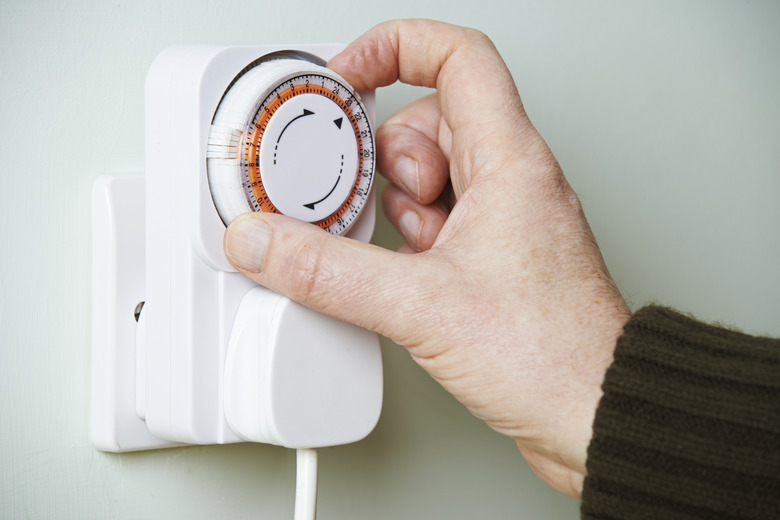How Do I Set A 24-Hour Light Timer?
We may receive a commission on purchases made from links.
Using an automatic timer switch for lights is an easy way to control your home's lighting when you're away. They are also a handy solution to forgetting to switch off the lights at night. Setting your 24-hour light timer is a simple task that requires no special tools. Most light timers can be programmed in a matter of minutes.
Types of 24-Hour Light Timers
Types of 24-Hour Light Timers
There are three types of 24-hour light timers: mechanical, digital, and smart (controlled by an app on your smartphone). Finding out how to set up a 24-hour light timer depends on the type of timer you own. Digital light timers and smart digital light timers should be programmed according to the product instructions. Below are step-by-step instructions for setting a traditional mechanical light timer.
How to Set a 24-Hour Light Timer
How to Set a 24-Hour Light Timer
Mechanical timer plugs typically have a timer dial marked in 30-minute increments. Some outlet timers, typically digital ones, have buttons for you to indicate the desired on and off times. Most mechanical light timers have a ring of tabs around the dial that indicate each time period when the light should be turned on.
- Switch your timer to its "automatic" or "timer on" setting if it has one. Some plug-in timers have an override feature, so it's best to double-check.
- Plug the 24-hour timer into a wall outlet.
- Turn the dial on the front of the timer to match the current time. Some 24-hour outlet timers indicate p.m. with a gray background and a.m. with a white background. Others will have clearly marked "a.m." and "p.m." labels.
- Indicate when you want the light to be turned on. For a timer with buttons, press the buttons that indicate when you want the lights to turn on and off. For a timer with tabs, press down all the tabs within the time frame when the light should be on. The light will turn off when the timer reaches any increments with the tabs up.
- Plug the light into the mechanical light timer and switch on the lamp.
- Test your settings by turning the dial until it reaches a time when the light should be off. If your light turns off, the timer has been set correctly.
- Turn the dial back to the correct time.
Tip
Consider changing the lightbulbs if you are planning to use an automatic light timer during an extended time away from home. This will ensure that the bulbs don't burn out from daily use while you are away.
